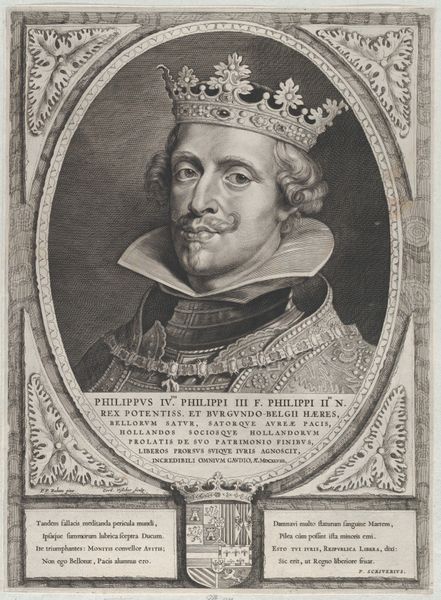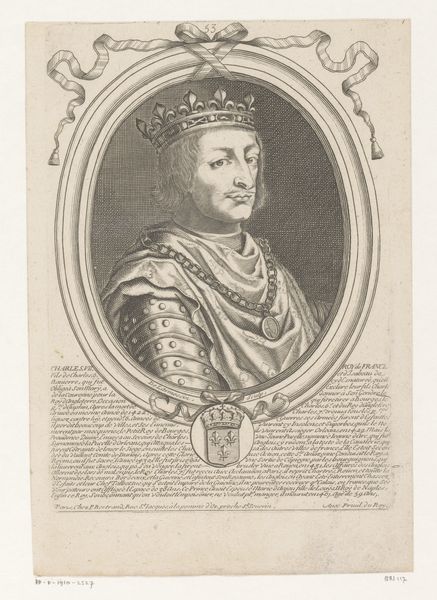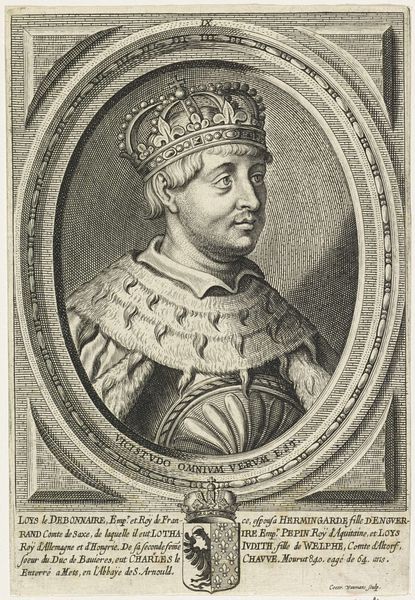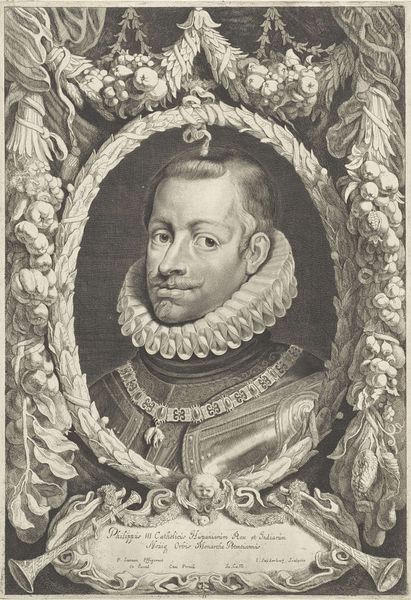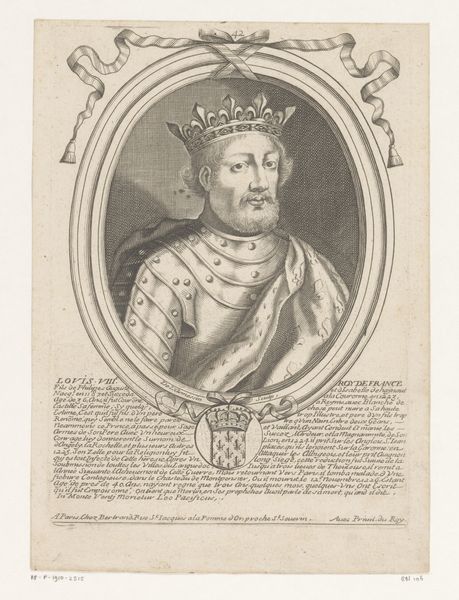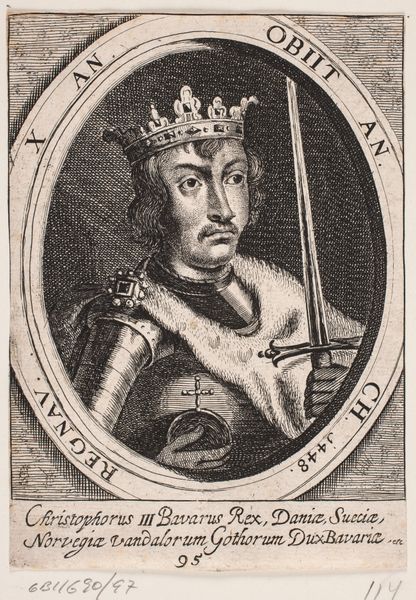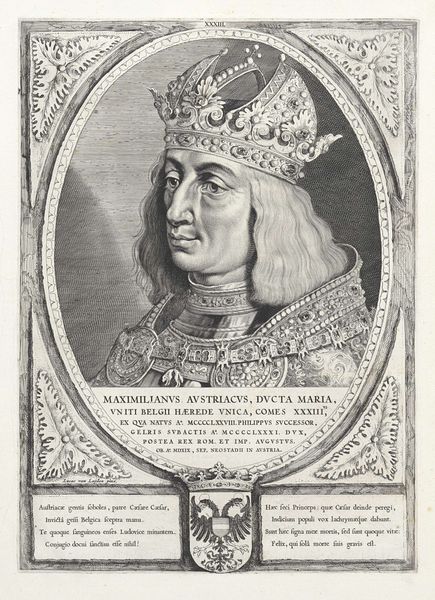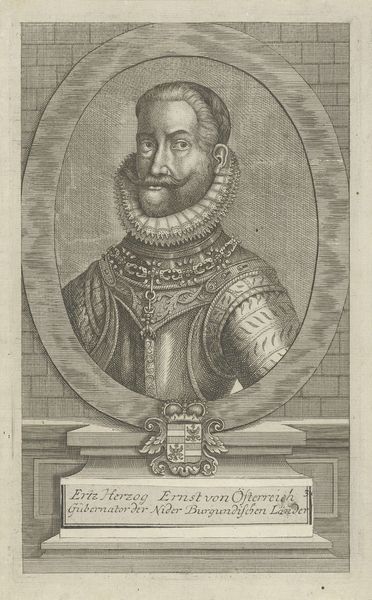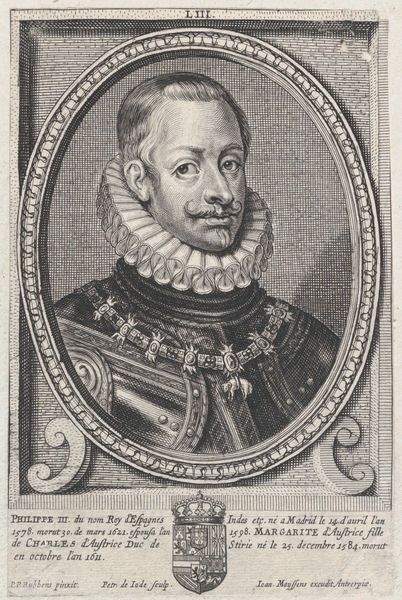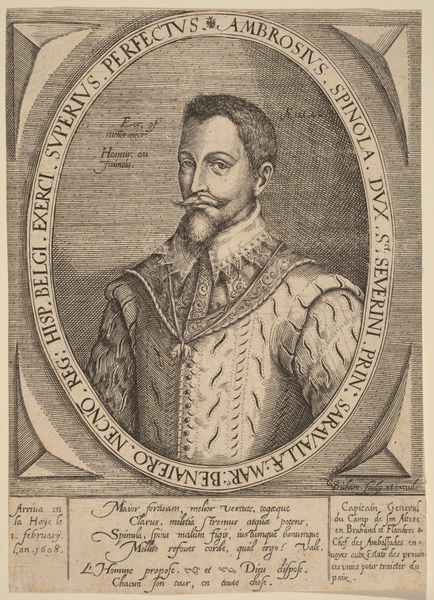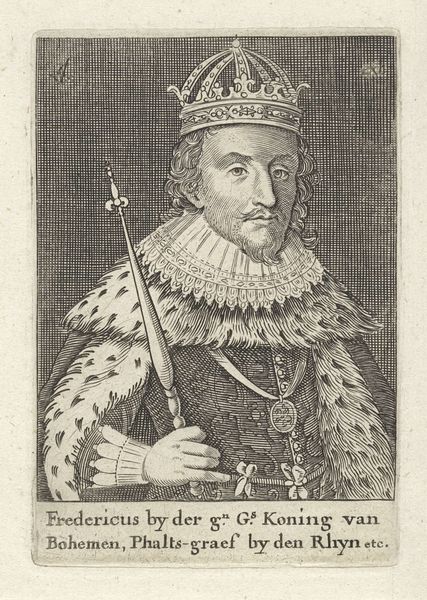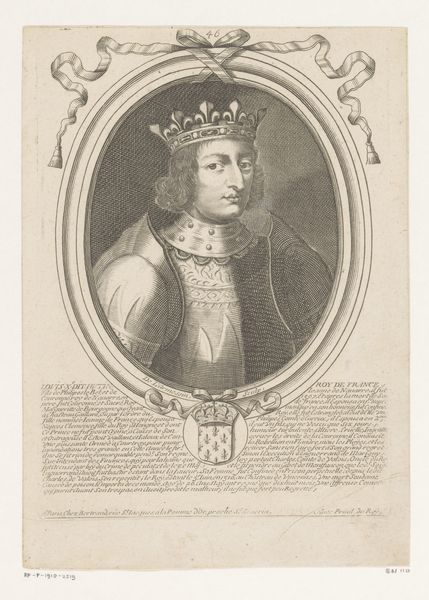
Philip III, King of Spain, from Principes Hollandiae, Zelandiae, et Frisiae 1650
0:00
0:00
drawing, print, paper, engraving
#
portrait
#
drawing
#
baroque
#
dutch-golden-age
# print
#
paper
#
engraving
Dimensions: 404x294 mm (sheet; trimmed)
Copyright: Public Domain
Curator: Here we have a portrait of Philip III, King of Spain, from the series "Principes Hollandiae, Zelandiae, et Frisiae." Cornelis Visscher created this engraving around 1650. Editor: My first impression is of meticulous detail. The ruff framing his face is so finely rendered. You can almost feel the texture of the paper against it. Curator: Indeed. Visscher was known for his skill with engraving tools. This print provides insight into the political climate of the Dutch Golden Age. Notice the text below the portrait. Editor: Yes, it's interesting how the inscription emphasizes Philip III’s complicated relationship with the Dutch Republic, essentially noting his non-admission to the County of Holland. The print medium itself suggests wide dissemination of this political message. Curator: Exactly! Printmaking was crucial for disseminating political ideologies and national identities. Consider how prints, being reproducible, circulated ideas and challenged Spanish authority, reinforcing a burgeoning Dutch identity through contrast. Editor: And think about the materiality—paper, ink, the engraver’s tools—all relatively accessible compared to, say, commissioning an oil painting. This puts political commentary within reach of a broader audience, and we see this example preserved today. Curator: The symbolism is layered. He's presented as a regal figure, emphasizing his power, yet the inscription highlights the limits of that power in the Dutch context. Editor: I’m drawn to the craftsman's time spent on the armor—a visual statement of military might, meticulously recreated. Each tiny line contributes to the overall impression of strength, all etched by hand, it makes you appreciate the maker's labour to communicate power. Curator: Ultimately, this work speaks volumes about the intersection of power, politics, and the burgeoning art market in 17th century Europe. Editor: Looking closely reveals not only a monarch but also the meticulous work that went into this accessible image. The process speaks to the social undercurrents of power and communication it helped to forge.
Comments
No comments
Be the first to comment and join the conversation on the ultimate creative platform.
